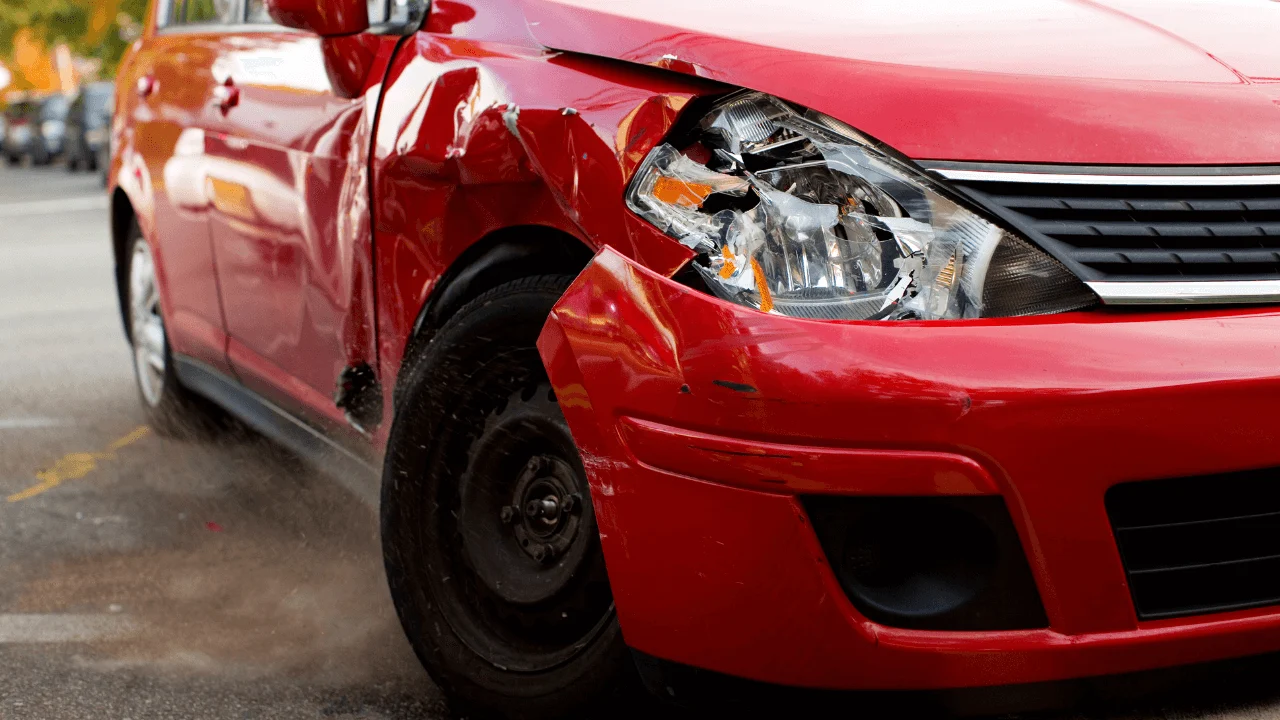
Single Vehicle Motor Accidents: What am I entitled to? The New South Wales Supreme Court clarifies single motor vehicle accident rules
Published on January 10, 2025 by Scott Dougall
The New South Wales Supreme Court in the recent case of AAI Limited t/as GIO v Evic [2024] NSWSC 1272 (GIO v Evic) has addressed the application of statutory benefits under the Motor Accident Injuries Act 2017 (NSW) (MAIA). In particular, the issue raised was whether sections 3.11 and 3.28 of the MAIA apply to an owner driver injured in a single motor vehicle accident.
1. Background
Previously Members (decision makers) of the Personal Injury Commission (PIC) had discretion to make an interpretation of sections 3.11 and 3.2 of the MAIA.
The New South Wales Supreme Court has recently provided some guidance to decision makers assessing cases that come before it of this nature.
2. The law before GIO v Evic
The MAIA imposes clear restrictions on a claimant’s entitlement to statutory benefits when they are found to be wholly or mostly at fault for their motor vehicle accident.
a) Weekly payments for loss of earnings
Division 3.3 of the legislation sets out the provisions regarding weekly payments of statutory benefits to injured persons. Section 3.11(a) states that an injured person is not entitled to weekly payments of statutory benefits for any period of loss of earnings or earning capacity beyond 52 weeks if they wholly or mostly cause the accident or if their injuries attributed to the injury are threshold injuries.
b) Medical treatment and care expenses
Division 3.4 of the MAIA sets out the statutory benefits for treatment and care. Section 32.28(1) states that an injured person is not entitled to statutory benefits for treatment and care expenses incurred beyond 52 weeks if it was (a) caused wholly or mostly by the person and (b) if their injuries attributed to the injury are threshold injuries.
These two sections of the MAIA are instrumental as they construe an injured person’s entitlements to statutory benefits from a motor vehicle accident. These provisions apply to all individuals, including those involved in single motor vehicle accidents, even when they own the vehicle.
3. The GIO v Evic case
This case is one concerning administrative law and was an appeal from the Personal Injury Commission.
The insurer in this case, (GIO), appealed against a decision of the Commission, who had found in favour of the injured claimant and in particular, that he was entitled to benefits beyond 52 weeks.
GIO was the compulsory third-party insurer of Mr Evic’s vehicle, a motorcycle which Mr Evic owned.
a) Background facts to the accident
On 20 November 2022, Mr Evic was injured while attempting to ride his motorcycle. As he mounted the bike, his left foot peg became entangled with his boots and riding pants, causing the motorcycle to fall and trap him underneath. The result was a spiral fracture to his left leg. This incident did not involve any other vehicles or drivers. Crucially, the motorcycle involved in the accident was owned by the claimant himself.
On 20 April 2023, GIO issued a second Liability Notice, denying Mr Evics’ right to ongoing statutory benefits under sections 3.11(1)(a) and 3.28(1)(a) of the MAIA, arguing that he was wholly or mostly at fault for the accident.
Mr Evic sought a review of that decision of GIO.
On 7 July 2023, following an unsuccessful internal review, Mr Evic applied to the PIC for a Miscellaneous Claims Assessment under Part 7 of the MAIA Act. The issue in dispute was whether, under sections 3.11 and 3.28 of the MAIA Act, Mr Evic was mostly or wholly at fault.
b) The PIC Member’s initial decision
When Mr Evic’s case first was brought before the PIC the decision maker found in favour of Mr Evic, holding that an injured driver in a single vehicle accident who owned the vehicle could not be considered “at fault”. The decision makers’ reasoning was twofold:
-
- An owner-driver cannot have an actionable claim against themselves for damages.
- The concept of “relative culpability” is inapplicable in cases where only one person is involved.
The decision maker stated that her reasons in this case should be read in conjunction with her reasons in the matter of Fatoula v GIO trading as AAMI. In that case, she concluded that an owner driver injured in a single motor vehicle accident could not be “at fault”, as that term is used in ss 3.11 and 3.28 of the MAIA Act.
Based upon the above reasoning, the decision maker concluded that the injured Claimant who was driving the vehicle and owned the vehicle could not be “at fault” as set out in sections 3.11 and 3.28 of the MAIA.
c) The Supreme Court’s decision (the subject case)
GIO in this case did not seek to quash the initial decision makers’ decision.
GIO advanced a single ground of review to the following effect:
“The Member erred in law in finding that the term ‘fault’ in sections 3.11 and 3.28 of the… MAI Act must be construed to refer only to the actionable tort of negligence, thus excluding contributory negligence, where an owner driver is injured in a single vehicle accident.” Justice Mitchelmore reviewed the initial case and disagreed with the decision makers’ conclusions, on the following basis: –
- Fault and contributory negligence – sections 3.11(1)(a) and 3.28(1)(a) focus on the Claimant’s failure to exercise reasonable care and how that failure contributed to the accident. The legal concept of contributory negligence applies here, particularly since it is referenced explicitly in the sections 3.11(2) and 3.28(2). This indicates that these sections are intended to capture all types of motor vehicle accidents, including single vehicle accidents.
- Culpability v negligence – the inability to weigh relative culpability (since only one person is involved) does not prevent an assessment of contributory negligence. In no-fault claims, for instance, the Claimant’s conduct is still evaluated based on their deviation from the standard of care required in the circumstances.
- Error in approach – the decision maker erroneously conflated the notion of contributory negligence in tort-based claims with the distinct statutory framework governing statutory benefits under Part 3 of the MAIA.
While Justice Mitchelmore found that the decision maker had erred, she did not overturn the Commission’s decision. The insurer had accepted the alternate finding that there was insufficient evidence to conclude that Mr Evic had failed to exercise reasonable care in riding his motorcycle. The proceedings were dismissed.
4. Key takeaways for claimants
The decision in AAI Limited t/as GIO v Evic establishes that the restrictions in sections 3.11(1)(a) and 3.28(1)(a) of the MAIA apply uniformly to all claimants, regardless of whether they own the vehicle involved in a single motor vehicle accident.
For owner-drivers, this ruling clarifies that there is no special exemption in single motor vehicle accidents. Like any other claimant, an owner-driver found to be wholly or mostly at fault will have their statutory benefits terminated after 52 weeks.
In these situations, contributory negligence is assessed based on the driver’s departure from the expected standard of care. If the degree of negligence exceeds 61%, statutory benefits will cease at the 52-week mark.
5. Limits on damages recovery for owner-drivers
It is also important to note that under the “no-fault” provisions in Part 5 of the MAIA, an owner-driver involved in a single motor vehicle accident is not entitled to recover damages. Section 5.4 of the MAIA precludes any recovery of damages if the driver’s act or omission, even if unintentional or involuntary, contributed to the accident.
This ruling strengthens the applicability of the MAIA’s limitations on statutory benefits and provides some clarification for claimants in single vehicle accidents. For drivers who own the vehicle involved in an accident, the same standards apply, and contributory negligence will be assessed based on their adherence to the required standard of care.
Please note that this article does not constitute legal advice. If you are seeking professional advice on any legal matters, you can contact Carroll & O’Dea Lawyers on 1800 059 278 or via our Contact Page and one of our lawyers will be able to assist you. If you have been injured in a motor vehicle accident, you can use our Personal injury Claim Check here to get help from one of our lawyers to determine your compensation entitlement.
